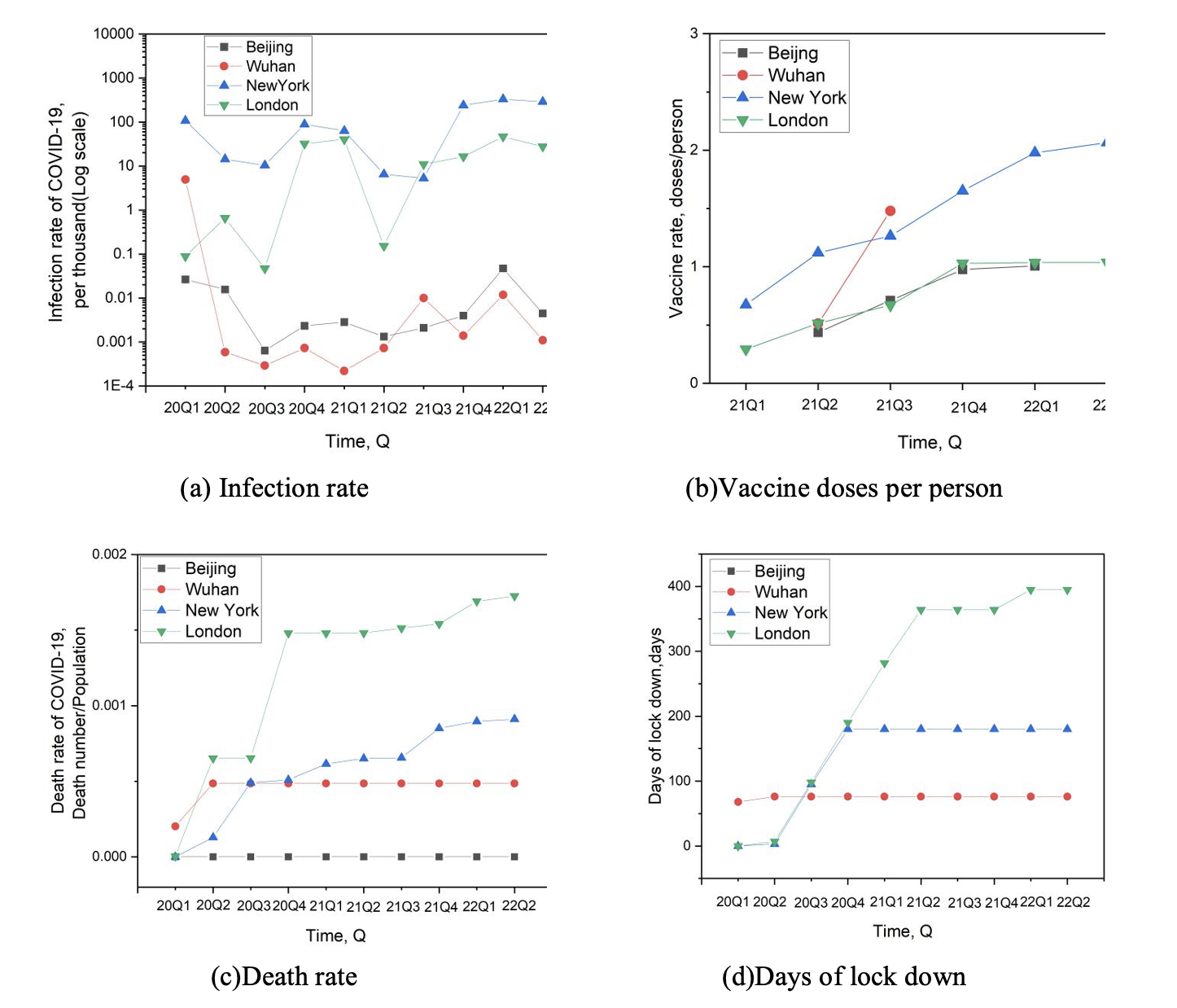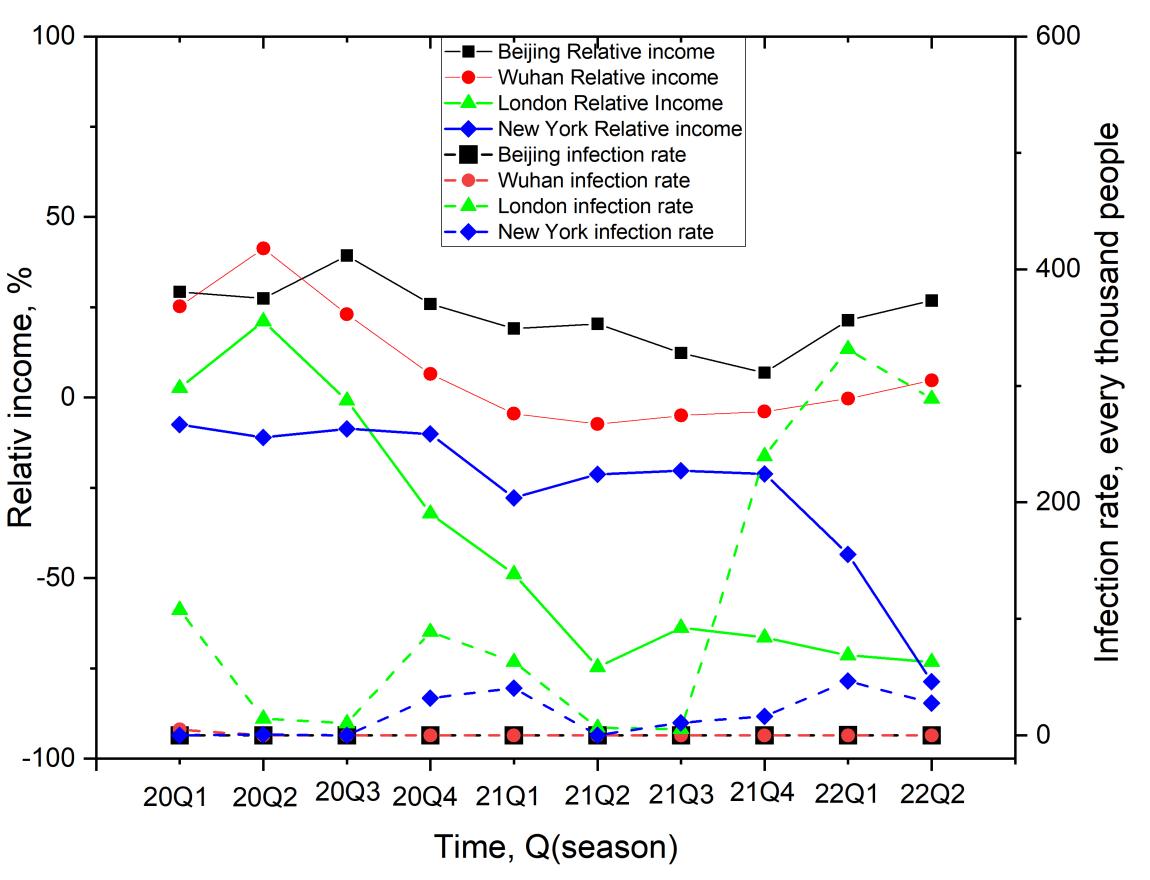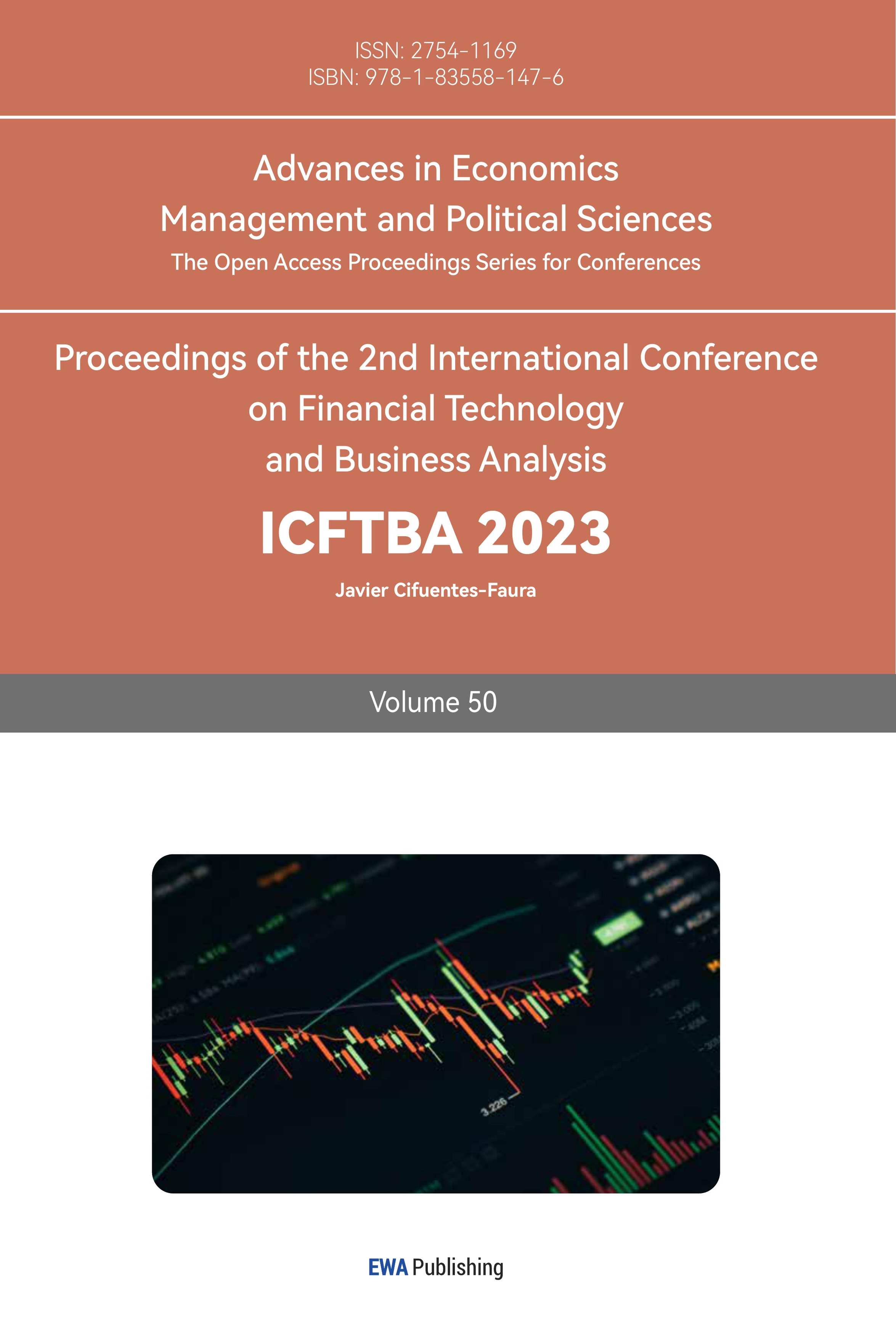1. Introduction
The past two and half years has witnessed the huge impact of COVID-19 on the world economy. The health challenges [1] and multifaceted challenges caused by different kinds of restrictions[2] it brought about has caused extraordinary obstacles on international trade, supply chain, the fluency of skilled labor [3] material [4] and project suspension[5], resulting in the increased unemployment and decreasing speed of global economic growth [6].
Construction industry is a pillar of the economy, which takes 7% of the world employment and 10% of gross domestic product (GDP) (International Labour Organization,2017). COVID-19 has also brought about huge direct and indirect negative impact to the construction industry, including the hazard of COVID -19 infection of the staff members, the rise of prize and lack in supply of material, the closure of construction sites under the lock down policy of different countries, the decreasing price and the amount of order. Construction industry around the world , especially in the developing countries, can hardly afford the long term close and other negative effect brought by the virus pandemic.
The earnings of construction industry can be easily calculated by minus the cost with income. Therefore, in order to investigate the effect of COVID -19 on the earnings of the construction industry. How did the virus pandemic influence the income and cost of different aspect, is the basic analysis need to be conducted through this study.
2. Aims and Objectives
The aim of this research is to develop an understanding of how much, from which aspects, and at what ratio the COVID-19 pandemic has affected the earning of the construction industry.
To achieve this aim, the following objectives are undertaken: gathering information about the cost and income of construction projects of different categories from different cities around the world with different economic backgrounds, proportion of COVID-19 infections, proportion of vaccination ratio, and period of lockdown. Moreover, investigate the effect of the relation between the cost, income of different kinds of construction projects and the COVID-19 situation in that area with the time unit of month.
3. Methodology
The methodology taken in this research is the data analysis on the base of some case studies.
Firstly, the data about the cost and income of construction projects from different backgrounds, along with the data showing the COVID-19 situation in these areas, are gathered. Secondly, these data will be classified into different categories and parked in the table developed as a database. And thirdly, this information will be used to develop the Figures and tables showing the effect of COVID-19 on the earning of construction projects from different backgrounds.
In this study, the effect of COVID-19 was generally evaluated by the proportion of COVID-19 infections, the proportion of vaccination ratio, the period of lockdown, and the GDP reduction of the city caused by the pandemic. While the cost and earnings of the projects are evaluated through the data of the material prize, the average salary of the skilled workers, and government investment in the infrastructure during 2020. The detailed information on the data collected is shown in the following Table 1. The information.
Table 1: Categories of information gathered.
INFORMATION ABOUT VIRUS PANDEMIC | ||
COVID -19 PANDEMIC INFORMATION | proportion of COVID-19 infections | |
proportion of vaccination ratio | ||
Days of lock down | ||
INFORMATION ABOUT CONSTRUCTION PROJECTS EARNINGS | ||
COST REALTED INFORMATION | Prize of Material | Cement |
Aggregate | ||
Steel | ||
Land Prize | ||
Design and consultant prize | ||
Average Worker salary | ||
INCOME RELATED INFORMATION | Residential Projects | Average prize of houses/apartment |
Average rent of houses/apartment | ||
Commercial projects | Average high street and shopping center rents | |
Govenment investment on Infrustructural projects | ||
In order to find out the effect of the virus on the construction industry, monthly relative value was used to conduct further analysis, the equation of relative value is shown as follows:
R \( elative value of {x^{th}} season in y year=\frac{value of {x^{th}} season in y year}{value of {x^{th}} season in 2019} \) (1)
Four cities around the world were selected as specimens to conduct the following analysis, including Beijing, Wuhan, London, and New York.
Wuhan, which is widely believed to be the first city going through the COVID-19 crisis, has unique research value and significance and was selected to be the first subject of research.
Beijing, the capital city of China, has continuously taken the strictest politics and rules to control COVID-19. Apart from this, China has been the country with the largest amount and scale of construction projects for over ten years. Therefore, Beijing was also selected to investigate the effect of the virus pandemic.
London and New York are not only the most prominent cities but also the largest trade centers all around the world. The tertiary industry took the majority of the GDP in these two cities, while COVID-19 had a highly significant adverse effect on the tertiary industry. Because of these, data from New York and London were also selected to conduct the analysis.
The following part has compared the effect of COVID-19 on the earning of the construction industry in these four different cities through the years of 2019, 2020, 2021, and 2022, which can hopefully find out reasons from which aspects have caused the actual economical loss in construction industry earning.
4. Result and Discussion
4.1. COVID-19 Situation Comparison of Four Cities

Figure 1: Data used to evaluate the COVID-19 effect and response.
Figure 1 was developed on the basis of data collected from the government statistics website of UK, US, and China. It is clear that at the very first age, Wuhan and Beijing suffered the most from the COVID-19 situation, but since the second season of 2020(Q2), the city of London and New York went through a terrible pandemic.
Figure 1(a) and (c) showed that Beijing and Wuhan have quickly taken the COVID-19 under control since Q2 of 2020, It is mainly because of the very strict rules including cut off all the transport going out off Wuhan since 28th of March. The peak of infection and death rate of London and New York showed almost at the same time,: Q4 of 2020 and Q4 at 2021, corresponding to the existence two new kinds of virus with high infectivity: SARS-CoV-2 and Omicron Covid-19 variant.
Figure1(b) and (d) showed the response of these cities against the virus, London went through the longest period of lock down, followed by the city of New York, Wuhan got totally locked down at the first season, but went through no extra restriction afterward. London is now having the highest level of vaccine rate, which is believed is the corresponding methods to reduce the high death and infection rate.
4.2. Relation Between Relative Earning of Construction Projects and Proportion of Covid-19 Infection
In this study, in order to find out the effect of COVID-19 on earnings, the following simplified equation was used to calculate the relative earning of the construction industry over the past two and half years. It should still be noted that this calculation didn’t take the actual income and cost into account, therefore, can only be used as a reference. In equation (2), the relative income means the average value of three income-related values. And the relative cost is the average value of five cost-related value
\( relative earning=relative income-relative cost \) (2)
 The result is shown in the following figure 4, together with the infection rate from Figure1(a).
The result is shown in the following figure 4, together with the infection rate from Figure1(a).
Figure 2: Relative earnings of the construction industry in four cities.
It is obvious that except Beijing, Beijing and Wuhan witnessed the steady increase in earning compared with the year 2019 while New York and London went through great decrease of about 70% at the year of 2022. Construction industry in London suffered from the largest loss since it has gone through the decrease of over 50% since the early season of 2021. These phenomenon may be caused by the following reasons:
(1)China, as a developing country, has larger potential in the construction industry compared with developed countries like London and New York.
(2)The economy of Wuhan and Beijing relied primarily on Secondary industries, including manufacturing. Which has higher resistance to the effect caused by COVID-19.
(3)The first stage of the lockdown policy in China is efficient in long-term control of the virus.
When being compared with the infection rate data shown in break lines, the earning line is showing an opposite trend compared with the infection rate line, the phenomenon is evident in London and New York lines.
Conclusion
This study collected the data gathered from the government websites, and established one equation to calculate the appropriate earnings of construction industry relative the earning of 2019, the year before COVID-19 pandemic.Following are the conclusions according to the analysis in this study:
(1) London and NYC went through more loss in construction industry compared with Beijng and Wuhan. It is believed that the larger potential in construction industry, higher percent of manufacture in economic and stricter lock done policy at the first stage is the main reason for this phenomenon.
(2) Both the income and cost of the construction industry suffered from loss at the first stage of covid-19 pandemic. The price of material, average salary, along with the prize and rent of houses and retail shops all went through a decrease at the first and second quarters of 2020. However, the effect of COVID-19 is more significant in the retail rent.
References
[1]. Amoah, C. and Simpeh, F. (2020), “Implementation challenges of COVID-19 safety measures at construction sites in South Africa”, Journal of Facilities Management, Vol. 19 No. 1, pp. 111-128, doi: 10.1108/jfm-08-2020-0061.
[2]. Ogunnusi, M., Hamma-Adama, M., Salman, H. and Kouider, T. (2020), “COVID-19 pandemic: the effects and prospects in the construction industry”, International Journal of Real Estate Studies, Vol. 14 Special Issue 2, pp. 120-128.
[3]. Sierra, F. (2021), “COVID-19: main challenges during construction stage”, Engineering, Construction and Architectural Management. doi: 10.1108/ecam-09-2020-0719.
[4]. Alsharef, A., Banerjee, S., Uddin, S., Albert, A. and Jaselskis, E. (2021), “Early impacts of the COVID-19 pandemic on the United States construction industry”, International Journal of Environmental Research and Public Health, Vol. 18 No. 4, p. 1559.
[5]. Agyekum, K., Kukah, A.S. and Amudjie, J. (2021), “The impact of COVID-19 on the construction industry in Ghana: the case of some selected firms”, Journal of Engineering, Design and Technology, ahead-of-print(ahead-of-print). doi: 10.1108/jedt-11-2020-0476.
[6]. Amponsah, R. and Frimpong, I.A. (2020), “Ghana in the face of COVID-19: economic impact of coronavirus (2019-NCOV) outbreak on Ghana”, Open Journal of Business and Management, Vol. 8 No. 04, p. 1404.
Cite this article
Liao,Y. (2023). Impact of the Global COVID -19 Pandemic on the Earnings of the Construction Industry. Advances in Economics, Management and Political Sciences,50,157-161.
Data availability
The datasets used and/or analyzed during the current study will be available from the authors upon reasonable request.
Disclaimer/Publisher's Note
The statements, opinions and data contained in all publications are solely those of the individual author(s) and contributor(s) and not of EWA Publishing and/or the editor(s). EWA Publishing and/or the editor(s) disclaim responsibility for any injury to people or property resulting from any ideas, methods, instructions or products referred to in the content.
About volume
Volume title: Proceedings of the 2nd International Conference on Financial Technology and Business Analysis
© 2024 by the author(s). Licensee EWA Publishing, Oxford, UK. This article is an open access article distributed under the terms and
conditions of the Creative Commons Attribution (CC BY) license. Authors who
publish this series agree to the following terms:
1. Authors retain copyright and grant the series right of first publication with the work simultaneously licensed under a Creative Commons
Attribution License that allows others to share the work with an acknowledgment of the work's authorship and initial publication in this
series.
2. Authors are able to enter into separate, additional contractual arrangements for the non-exclusive distribution of the series's published
version of the work (e.g., post it to an institutional repository or publish it in a book), with an acknowledgment of its initial
publication in this series.
3. Authors are permitted and encouraged to post their work online (e.g., in institutional repositories or on their website) prior to and
during the submission process, as it can lead to productive exchanges, as well as earlier and greater citation of published work (See
Open access policy for details).
References
[1]. Amoah, C. and Simpeh, F. (2020), “Implementation challenges of COVID-19 safety measures at construction sites in South Africa”, Journal of Facilities Management, Vol. 19 No. 1, pp. 111-128, doi: 10.1108/jfm-08-2020-0061.
[2]. Ogunnusi, M., Hamma-Adama, M., Salman, H. and Kouider, T. (2020), “COVID-19 pandemic: the effects and prospects in the construction industry”, International Journal of Real Estate Studies, Vol. 14 Special Issue 2, pp. 120-128.
[3]. Sierra, F. (2021), “COVID-19: main challenges during construction stage”, Engineering, Construction and Architectural Management. doi: 10.1108/ecam-09-2020-0719.
[4]. Alsharef, A., Banerjee, S., Uddin, S., Albert, A. and Jaselskis, E. (2021), “Early impacts of the COVID-19 pandemic on the United States construction industry”, International Journal of Environmental Research and Public Health, Vol. 18 No. 4, p. 1559.
[5]. Agyekum, K., Kukah, A.S. and Amudjie, J. (2021), “The impact of COVID-19 on the construction industry in Ghana: the case of some selected firms”, Journal of Engineering, Design and Technology, ahead-of-print(ahead-of-print). doi: 10.1108/jedt-11-2020-0476.
[6]. Amponsah, R. and Frimpong, I.A. (2020), “Ghana in the face of COVID-19: economic impact of coronavirus (2019-NCOV) outbreak on Ghana”, Open Journal of Business and Management, Vol. 8 No. 04, p. 1404.









